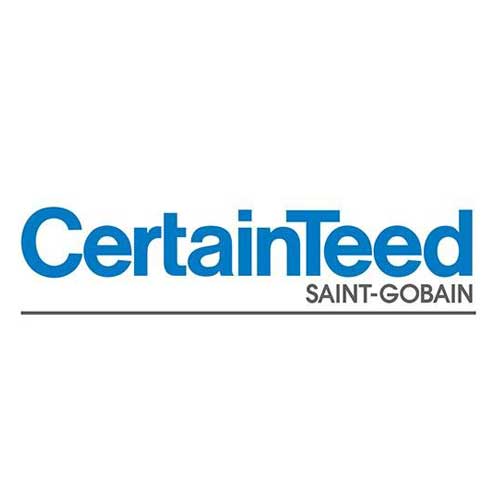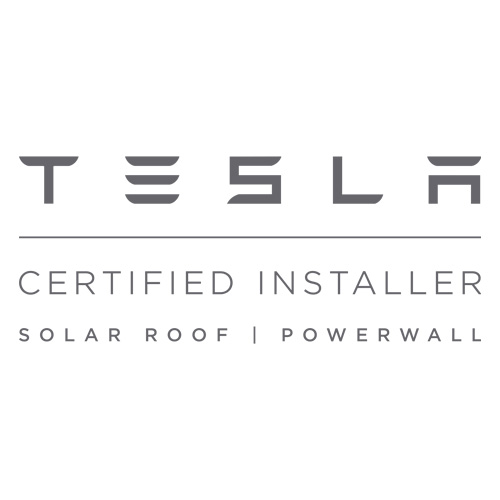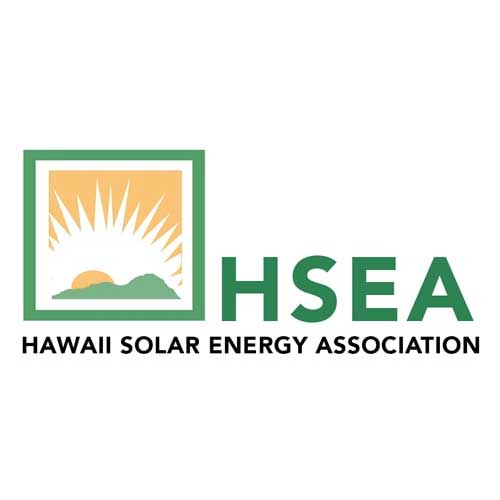Will Solar Panels Cause Roof Leaks?
Solar industry is becoming more and more popular, but there are still some misconceptions about them. Some people think that solar panels will cause roof leaks, while others believe that solar panels are incompatible with roofing materials. In this blog post, we’re going to clear up some of the most common solar panel roofing misconceptions and explain how roofers can work around solar panels. We’ll also discuss the installation process and some common solar panel roofing issues. Finally, we’ll explain how to prevent solar panel roof leaks and fix a leak that’s already happened. By the end of this post, you’ll have a better understanding of solar panels and how they work with your roof.
What Solar Panel Installations Mean For Your Roof
First and foremost, installing solar panels on your roof means you’re making an investment in renewable energy. Solar energy is clean, reliable, and safe; it doesn’t produce any pollution or greenhouse gasses like other forms of energy sources. Additionally, solar energy provides a steady source of electricity without having to rely on solar companies or public power grids. This can help reduce reliance on fossil fuels and promote sustainable living habits.
In terms of installation itself, there isn’t too much disruption when installing solar panels on your roof since most of the work involves connecting photovoltaic (solar) cells to the existing frame. It’s also usually a fairly quick process that doesn’t require tearing off shingles or other parts of the roof. Once installed, your panels will be securely mounted onto the roof with specialized brackets designed for durability in extreme weather conditions. Plus, with today’s advanced technology, most solar panel systems require very little maintenance over their long lifespan—normally 25-30 years!
Understanding The Risks Of Solar Panel Installation
When it comes to solar panels, everyone has heard the warnings about roof leaks. But what are the risks and how can you avoid them? Here are four key points to keep in mind when installing solar panels:.
- Solar panel installation carries with it a small risk of roof leaks. Leaks are more likely to occur around flashing and penetrations, but they can also happen at other locations on your roof where water enters the structure. Make sure that your solar installers are aware of any potential leaks and takes appropriate steps to prevent them.
- Solar panels can actually help prevent leaks by providing a barrier. When sunlight hits entire solar array, they generate electricity which powers your home or office. This barrier between the solar cells and water helps to protect against leaks.
- If you do experience a leak, it is important to have it repaired quickly to avoid further damage. Repairing a leak quickly will minimize the risk of water damage inside your home or office, as well as any environmental contamination that may occur from a leaking panel installation.
- Leaks can be caused by other factors such as poor installation, hail, or high winds – in fact, these are all commonly cited causes of roof leakage in general! Proper installation and maintenance along with regular inspections will help reduce the chances of roof leakage happening in the first place.
Roofing Materials Compatible With Solar Panels
Metal roofs are one of the best options when it comes to compatibility with solar panels. Metal roofs have a long lifespan, typically lasting between twenty and fifty years depending on maintenance and upkeep, making them an ideal choice for those seeking long-term energy savings from their solar installation. Furthermore, metal roofs are non-combustible, meaning they provide extra protection against fire or other natural disasters that may occur near your home. Additionally, metal roofs can be installed quickly and easily compared to other materials, saving time and money in installation costs.
Tile roofs are another great choice for those looking for sub roofing materials that are compatible with solar panels. Tile roofs can withstand high temperatures without absorbing heat or UV rays from the sun, thereby providing additional insulation which can help reduce cooling costs during hot summer days. Tiles come in a range of styles and colors, allowing homeowners to customize their roof’s aesthetic while still retaining its functionality as a strong foundation beneath their solar panels. Furthermore, tile roofs require very little maintenance once installed; this means fewer future expenses while still contributing towards a homeowner’s green goals through renewable energy production from their solar system.
Clay tile roofs also make great choices when it comes to compatibility with solar panels due to their ability to withstand extreme temperatures without cracking or crumbling like other types of tiles might under similar conditions. Clay tiles also provide additional insulation by reflecting rather than absorbing heat from the sun’s rays; this extra insulation helps keep homes cooler during sweltering days without sacrificing efficiency in energy production from the solar system mounted atop them. Clay tiles also come in many different shapes, sizes, and colors so homeowners can find something that complements both their home’s architecture while still providing adequate protection against damage due to storms or other natural disasters thanks to its durable nature as a building material.
Finally, slate tile roofs offer yet another great option when considering rooftop materials that are compatible with solar installations due its robustness in adverse conditions such as heavy rain or snowfall. Slate tiles create an aesthetically pleasing look on rooftops but also offer superior protection against water damage since they do not absorb moisture like some other types of materials would; this helps ensure long-term performance from your rooftop solar system despite inclement weather conditions that may otherwise disrupt electricity production from your panels over time if not adequately covered or protected properly beforehand .
Use Sunscreen And Rain Gear When Viewing Solar Panels
It’s not just the sun that can be harmful to your skin when it comes to solar panels. Homeowners should also be aware of the dangers posed by wind and rain while viewing their panels. Solar panels generate a lot of heat, which in some cases can cause roofs to leak. Additionally, solar panels can also increase the risk of mold and mildew growth. To avoid these dangers, keep these tips in mind:.
- In some cases, excessive heat from solar panels can cause roofs to leak. Install your solar panels in a way that allows for proper ventilation so that the roof doesn’t overheat and begin to leak.
- Solar panels should be installed in a way that allows for proper sunlight exposure – not behind any trees or buildings where sunlight cannot reach the panel. This will ensure optimal performance and prevent any damage to your panel or roof from occurring.
- Homeowners should regularly inspect their solar panels for signs of wear and tear – as well as any damage caused by weather conditions – so that they know their system is functioning properly. If there are any problems, homeowners should contact their installer or contractor immediately.
- Homeowners should use sunscreen when viewing their solar panel system because the sun’s harmful rays are still able to reach them even when they’re outside wearing sunscreen. Additionally, using rain gear will help protect you from water droplets that could contain mold or other contaminants.
The Solar Panel Installation Process
If you’re interested in installing solar panels on your home or business, it’s important to know the ins and outs of the installation process. Below, we’ll outline the steps that you need to take in order to have your solar panels installed correctly.
First, make sure that you choose a certified professional to install your solar panels. This is important because they have the experience and knowledge needed to complete the installation safely and correctly. Once you’ve found a qualified installer, schedule an appointment so that they can come out and assess your property.
The installation process is generally quick and easy – typically taking around two hours from start to finish. During this time, your installer will first assess the area where your solar panels will be installed. After that, they will begin preparations by drilling holes in the roof of your home or business and installing mounting brackets for your solar panels. Finally, they will install your solar panels using specialized tools and attach them to the brackets. Solar panel warranties usually include protection against leaks for up to one year after installation, so there’s no risk involved in choosing a qualified professional!
Once everything is installed, you’ll need to test for leaks before signing any paperwork or completing any warranty claims. If there are any leaks detected during testing, please contact your installer immediately so that they can correct the issue as quickly as possible. In most cases, leaking solar panels can be fixed without requiring any major repairs or replacements – just call up your installer and tell them what’s going on!
Solar power is becoming more popular all the time due to its environmental benefits as well as its ability to reduce energy costs over time by generating power when it’s sunny out instead of using electricity at night when rates are higher. So if you’re considering installing solar panels on your home or business property – do it right with a qualified professional like those at Haleakala Solar and Roofing.
Understanding The Risks Of Solar Panel Installation
If you’re looking to save on your energy costs, then a solar panel installation is a great option for you. However, there are some risks associated with solar panel installation that you need to be aware of. By working with a professional Solar Panel Installer, you can avoid these risks and make sure that your solar panel installation goes off without a hitch.
Cost
Installing a home or business’s solar system can be expensive, even if you plan on doing most of the work yourself. In addition to the cost of purchasing and installing panels, batteries, inverters, wiring, mounts and other necessary equipment, there are also additional expenses such as permits and taxes that must be covered in order to complete an installation. As such, it’s important to do your research and make sure you have enough cash on hand before making any commitments.
Lifespan
One of the major benefits of solar power systems is their long lifespan. Most solar panel manufacturers will offer warranties or guarantees that last up 20 years or more; however, this doesn’t account for regular maintenance requirements or potential damage caused by storms or other hazards. Therefore, it’s important to keep an eye on your system over time so that any issues can be addressed promptly.
Location
Solar panels require direct exposure to sunlight in order to operate effectively; as such it’s important to consider both the orientation and angle at which they are installed in relation to sunlight availability when planning your installation. Additionally, if trees or buildings are blocking certain areas from direct sunlight then this could limit how much power you can generate from your system.
Durability
Solar panels are made from durable materials designed for long-term use; however they still require regular maintenance in order to ensure optimal performance over time. Issues such as dirt buildup on the surface of a panel can decrease its efficiency significantly over time so it’s important to ensure that you either have access to someone who can regularly clean them off or invest in some kind of self-cleaning system (such as those offered by many large-scale manufacturers).
Safety
While most linear current photovoltaic systems are completely safe once installed correctly – due largely in part by its lack of moving parts – there is still always room for potential safety issues depending on where you live and what kind of environment you’re working within when installing them (such as working near hazardous substances like water). In addition, since electric components play a big role in powering these systems, extra precautions need to be taken during wiring procedures in order to avoid electric shock or worse.
Common Solar Panel Roofing Issues
- Shade: If a portion of your flat roof is in shade due to nearby trees or other buildings, it is important to install enough solar panels that are still able to generate adequate power even when part of the array is in shade. The best way to do this is by adding more panels than necessary and positioning them optimally so that they are not all blocked by shadows at any given time.
- Structural Issues: Solar panel installation requires anchoring the array into the structure of your home’s roof, which could cause structural damage if not done properly. You should always consult a professional installer who will be able to assess your roof’s integrity before proceeding with installation.
- Roof Type: Certain roof types may be ill-suited for solar panel installation due to their material composition or steepness, such as certain types of clay or slate tiles that are especially brittle and prone to cracking when drilled into, or very steep roofs that cannot support heavy equipment during installation without risk of damage or collapse.
- Allowable Weight Loads: To ensure safety during installation and once the system is up and running, it is important to ensure that the weight load on your roof does not exceed its allowable capacity for added weight from solar equipment and materials—otherwise there may be an increased danger of collapse during storms or earthquakes, as well as reduced life expectancy for your roof due to excessive strain from the additional weight.
- Local Building Regulations: Many local governments have regulations regarding solar panel installations on residential roofs, since these systems affect both public utility lines and can also have an aesthetic impact on neighborhoods with multiple homes sporting solar arrays on their roofs. It is important to check with local authorities before embarking on a project like this so as not to run afoul of any existing laws or regulations pertaining specifically to rooftop solar power installations in your area.
- Permit Applications: Even if local regulations don’t require a special permit for rooftop systems but it may still be necessary in order for you to receive financial incentives from utilities or other organizations offering subsidies for such projects; most states require an application process specific for homeowners interested in taking advantage of these programs so it pays off (literally) to get familiar with what paperwork needs filling out beforehand!
- Cost Considerations: Finally, beyond making sure everything else checks out technically and legally speaking, you should also factor in cost considerations when deciding whether installing solar panels on your roof makes sense financially—from both purchase/installation costs and long-term energy savings perspectives—as well as consider any available financing options you might qualify for in order make this decision easier (or more affordable).
Preventing Solar Panel Roof Leaks
Are you thinking about installing solar panels on your roof? Before you do, it’s important to be aware of the risks involved. Solar panels can cause leaks if they’re installed incorrectly on your roof. This can lead to water damage and even structural damage to your home. To prevent these problems, make sure that you have a qualified contractor install solar panels correctly.
Here are six tips for preventing solar panel roof leaks:.
- Solar panels are mounted on your roof using brackets and screws. Make sure that these screws are properly tightened so that the panel doesn’t move or move during storms.
- Make sure that the solar panels are properly aligned with the angle of your roof – this will ensure proper installation and minimize potential leaks.
- If there is any water seeping into the panel from below, seal the seams around the panel with weatherproof sealant or silicone caulking. Use additional silicone caulking around penetrations (such as pipes) in order to prevent water from entering in from other areas of the house as well.
- Seal any cracks or holes in your asphalt or shingle roofing surface where water may be seeping in – this includes around penetrations such as ventilation holes and electrical wires buried below ground level 。
- Always use flashing around electrical boxes, plumbing fixtures, vents, flashings etc., so that moisture cannot enter these areas and cause corrosion and future leakage problems 。 And finally, use drip edges along eaves, gutters & downspouts to slow infiltration of rainwater onto roofs.
To Sum Things Up
In conclusion when considering whether or not having an array of photovoltaic cells mounted onto your rooftop might cause leaking problems it’s important understand what factors may contribute towards increased risk so you can take necessary precautions beforehand while also ensuring regular maintenance post-installation so any minor problems don’t turn into major disasters down the line costing you time & money!









